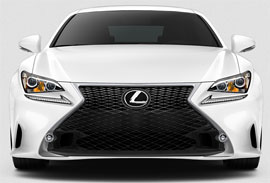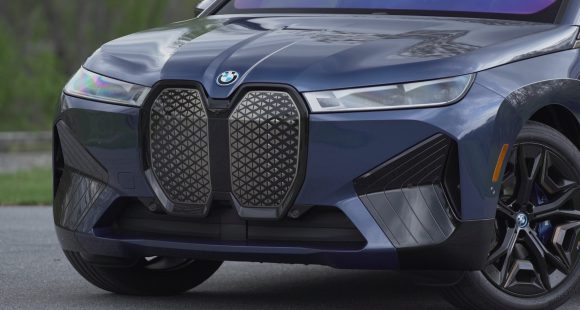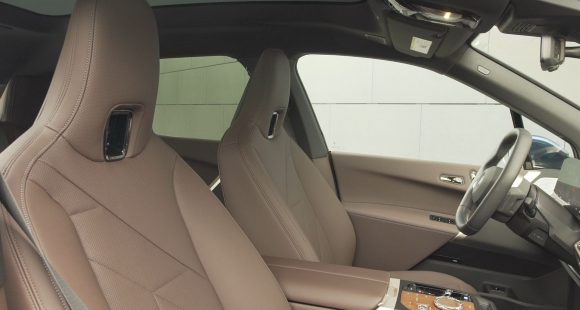2015 Lexus RC Sport Coupe
If you’ve been following the Lexus brand lately, you know that they’re on an all-out mission to shed their soft, comfy, pure luxury image…that’s still a work in progress; it takes a long time to change people’s minds about a brand. But the new RC coupe just might be the car that speeds that change along.
The 2015 Lexus RC marks the brand’s reentry into the sporty coupe segment. And from the looks of this car, they’re not jumping back in quietly. The RC may not instantly strike fear into the hearts of the German marques that dominate this segment, but they will certainly know Lexus has joined the party.
The RC’s compliant, yet very rigid chassis is an all-star for sure. It’s not a new chassis per se, but a modified combination of 2 separate Lexus platforms. The front architecture and suspension comes from the mid-size GS, while the rear comes from the compact IS, with a lot of structural bracing in between. Enough to satisfy a fairly wide variety of tastes.
Taking a walk through the lineup, things start with the RC 350. It’s the tamest model with a 3.5-liter V6 coming directly over from the GS, outputting the same 306-horsepwer and 277 lb-ft. of torque. Transmission is also the same 8-speed automatic, with steering wheel shifters, unless you choose all-wheel-drive in which case you’ll lose 2 gears.
 But, the outside is anything but tame. While it may not the most dynamic looking Lexus of all-time, it’s pretty darn close.
But, the outside is anything but tame. While it may not the most dynamic looking Lexus of all-time, it’s pretty darn close.
It’s still Lexus-smooth, but with plenty of sharp angles and body tucks to drum up some excitement. The front end screams aggression with a big-mouth grille and vertical openings slashed into the corners.
18-inch wheels are standard, with significant fender flares above them. L-shaped LED rear lighting has been updated with clear, jagged lenses protruding out. The rear bumper also gets slashed up with simulated corner vents.
Inside, things are less of a departure. There’s still lots of luxury to touch and plenty of serenity to be had when driving. Lexus calls this a pure 2+2 Coupe, so rear space, especially leg room, is limited.
4-dial gauges set a sporty tone, with a small central TFT screen providing plenty of info. 10.4 cubic-ft of space hides in the trunk, and useful folding rear seatbacks add to that. Neither back-up camera nor navigation are standard, however, but if you do upgrade, there’s a new remote touchpad for inputs.
Next up the line is the RC 350 F Sport, and the added content is very high. For the exterior, there are 19-inch wheels, unique front and rear fascia, and fender badging.
Inside it gets even better with supportive sport seats, new sport pedals, LFA-inspired gauges, black headliner, and tasteful silver trim.
 While the Sport’s engine is unchanged, there are lots of mechanical upgrades. Like adaptive variable suspension, high-friction brake pads, 4-wheel steering, and the additional Sport+ driving mode.
While the Sport’s engine is unchanged, there are lots of mechanical upgrades. Like adaptive variable suspension, high-friction brake pads, 4-wheel steering, and the additional Sport+ driving mode.
We spent most of our drive time in the F Sport and were very impressed with its light and balanced feel. Around the track at the Monticello Motor Club, things felt super-rigid with virtually no flex.
The rear-steer speeds up turn-ins, and the car has an almost Porsche-like competency, where you have a hard time believing you’re having this much fun in a straight-up street car, let alone a Lexus. And you can do some serious pushing without feeling like you’re going to end up in some “epic fail” video on You Tube.
But, where this tale really gets interesting is in the top-of-the-line RC F. This car is serious, with a 467-horsepwer 5.0-liter V8, as well as fully upgraded chassis and brakes.
It’s a beast! On the street, it feels a little nose heavy, and steering is slower, though you can dial in more with Sport and Sport+ settings, but we found it almost too aggressive for everyday use.
On the track however, it comes alive with the V8 growling on acceleration, and barking on downshifts. Transmission is also an 8-speed, but it’s different enough to get a separate internal name.
 A Torsen limited-slip rear is standard and you can upgrade to a torque vectoring rear, which includes “set-it-and-forget-it” presets for standard, slalom, and track. The torque vectoring rear is highly recommended, as it allows you to seriously late brake and perform dare-devil late turn-ins well beyond your skill set.
A Torsen limited-slip rear is standard and you can upgrade to a torque vectoring rear, which includes “set-it-and-forget-it” presets for standard, slalom, and track. The torque vectoring rear is highly recommended, as it allows you to seriously late brake and perform dare-devil late turn-ins well beyond your skill set.
All of that, along with huge 6-piston Brembos up front, make the RC F a legit player in the RS, M, and AMG game. Lexus claims 0-60 happens in 4.4-seconds and we believe it.
Prices are competitive too, starting at $43,715 for the RC 350, the F Sport comes in at $47,700, and the big-dog RC F goes for $63,325.
While the LFA got the performance-image ball rolling for Lexus, things have been slow in gaining momentum. But we think the 2015 RC is a game changer, and just what the Lexus makeover has been waiting for.
Specifications
- Engine: 3.5 liter V6
- Horsepower: 306
- Torque: 277 lb-ft.
2024 BMW iX M60
Still Quirky, But A Whole Lot Faster!
While many BMW EVs are virtually identical to their ICE counterparts, when it comes to their iX utility vehicle, well, that’s its own unique animal, especially when it comes to this 610-horsepower M60. And now we get a chance to see if we can tame it.
High-performance SUVs are nothing new to BMW, so when their all-electric iX utility debuted for 2022, it didn’t take long for them to inject a little M performance into it. And while we did get some early seat time in the iX M60, this 2024 version is the first time we’ve been able to give it a complete test.
A refresher on the details, the M60 uses a dual motor arrangement; the front motor putting out 255 horsepower, the rear motor almost twice as much. Combined, they whip up 610 horsepower and 811 lb-ft of torque, which we couldn’t wait to exploit at our test track.
xBMW’s electric motors are built in-house, and are unique from most as they use electric pulses to trigger the rotors instead of magnets. This comes into play most obviously in the rear motor where its immediate power delivery somehow seems even more immediate than most. Absolutely zero drop-off in power throughout the quarter-mile, with our best time an 11.7 at 119 mph.
While handling is BMW’s forte regardless of powertrain or vehicle segment, we could feel a little more weight transfer here in the M60, compared to the xDrive50. That’s despite the four-corner air suspension with automatic level control getting some M-spec tuning.
We really had to keep inputs smooth to avoid a full shutdown from the stability system; there was also noticeable lag time between when we initiated turn-ins and when those commands were actually carried out. All of this made more difficult by the iX’s goofy-shaped steering wheel and front seats that feel more like a recliners than sport seats. Brakes felt mostly the same as in the xDrive50: Very little nose dive, good feedback, and consistent drama-free stops from 60 in just 102 feet.
On the street, it feels incredibly fast, bordering on outrageously quick.
So, while it’s still a bit of a mixed bag when it comes to driving on the track, on the street, it feels incredibly fast, bordering on outrageously quick. Meaning you better be prepared for the fury that’s about to be unleashed if you go full in on the accelerator.
And even with all of the performance, and using the same 111.5-kWh battery, the M60 still delivers great range of 296 miles, just 11 fewer than xDrive50. Max charging rate of 250 kW will get you to 80% in 35 minutes.
Whether it’s that steering wheel, the minimal dash with the sweeping digital cockpit display, the center console’s wood and glass controls, heating elements in the armrests, gesture control, or the Panoramic Sky Lounge LED sunroof that frosts over at the touch of a button, it’s all kind of a “far out” experience in the cabin. But also, a very roomy one with almost an open floor plan up front, and lots of space and features for rear seat passengers. Capacity in the cargo area is 35.5 cubic-feet; folding seatbacks can expand the space to 77.9 cubic-feet.
Similar in size to the X5, the iX is built on a unique spaceframe architecture made up of a combination of carbon-fiber, high-strength steel and aluminum, an evolution of what they started back in 2014 with the i3, their first EV. Unique elements for the M60 include blue brake calipers, adaptive LED laserlight headlights, and 21-inch wheels which can be upgraded to these 22-inch M two-tone alloys. It’s not the most beautiful BMW we’ve seen lately, but it sure is unique, and everyone will know it’s not your typical BMW.
Using 42 kWh of energy per 100 miles, the M60 earns a fair efficiency rating. Considering base pricing for the xDrive50 starts at $88,095, the step up to the M60 is a significant one at $112,495.
Admittedly, we weren’t completely enamored with the original iX; great EV, it was just a little too much off-brand for us. It still has its quirks; but after injecting a whole lot more BMW into this 2024 BMW iX M60, now that seems much more like it!
Specifications
As Tested
- Motor Setup: Dual Motor
- Battery Size: 111.5-kWh
- Horsepower: 610
- Torque: 811 lb-ft.
- EV Range: up to 296 miles
- 0-60 mph: 3.5 seconds
- 1/4 Mile: 11.7 seconds at 119 mph
- Braking, 60-0 (avg): 102 feet
- Max Charging Rate: 250-kW
- Efficiency: 42-kWh / 100 miles



































